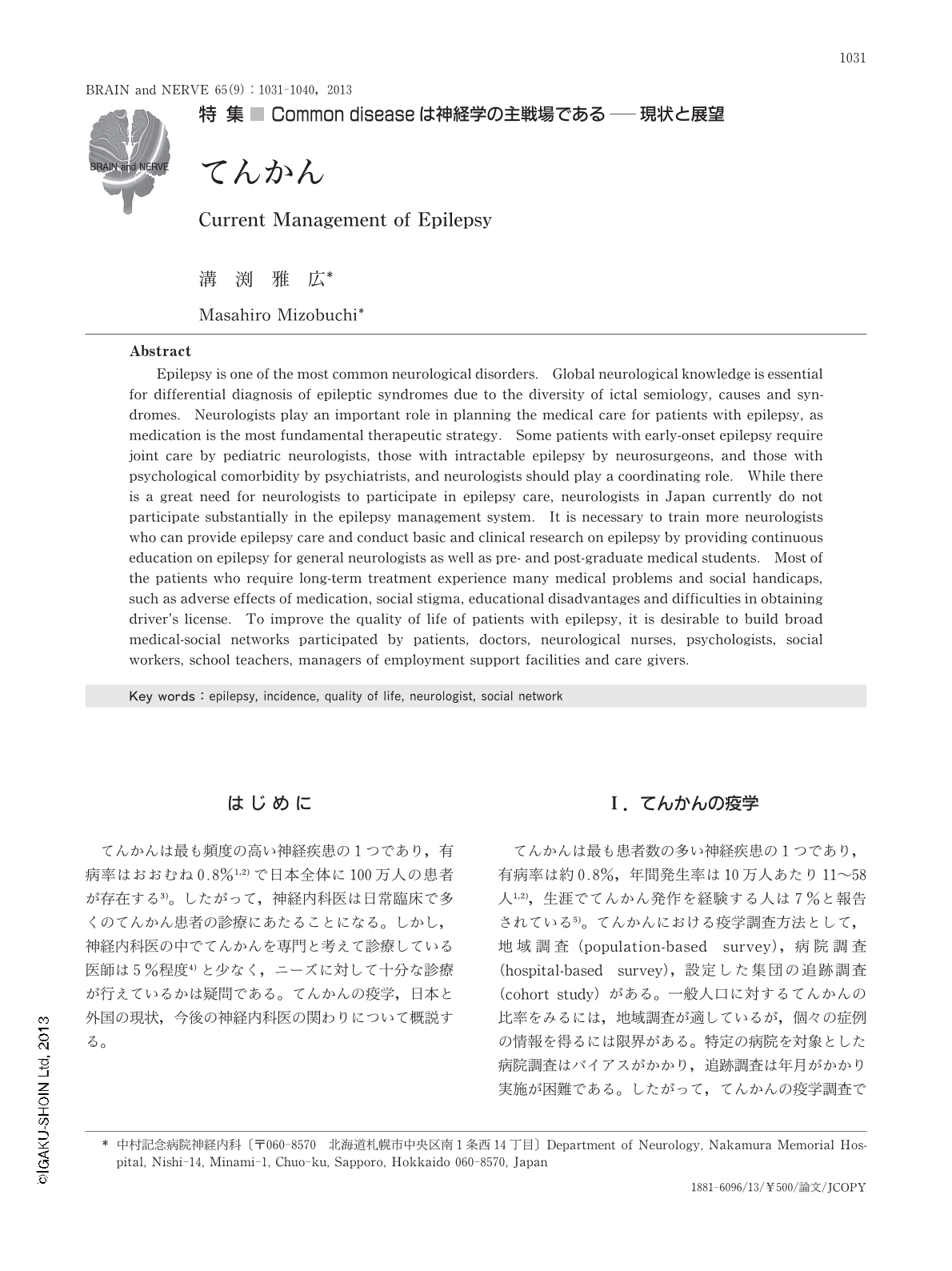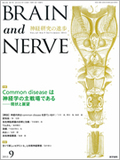Japanese
English
- 有料閲覧
- Abstract 文献概要
- 1ページ目 Look Inside
- 参考文献 Reference
はじめに
てんかんは最も頻度の高い神経疾患の1つであり,有病率はおおむね0.8%1,2)で日本全体に100万人の患者が存在する3)。したがって,神経内科医は日常臨床で多くのてんかん患者の診療にあたることになる。しかし,神経内科医の中でてんかんを専門と考えて診療している医師は5%程度4)と少なく,ニーズに対して十分な診療が行えているかは疑問である。てんかんの疫学,日本と外国の現状,今後の神経内科医の関わりについて概説する。
Abstract
Epilepsy is one of the most common neurological disorders. Global neurological knowledge is essential for differential diagnosis of epileptic syndromes due to the diversity of ictal semiology, causes and syndromes. Neurologists play an important role in planning the medical care for patients with epilepsy, as medication is the most fundamental therapeutic strategy. Some patients with early-onset epilepsy require joint care by pediatric neurologists, those with intractable epilepsy by neurosurgeons, and those with psychological comorbidity by psychiatrists, and neurologists should play a coordinating role. While there is a great need for neurologists to participate in epilepsy care, neurologists in Japan currently do not participate substantially in the epilepsy management system. It is necessary to train more neurologists who can provide epilepsy care and conduct basic and clinical research on epilepsy by providing continuous education on epilepsy for general neurologists as well as pre- and post-graduate medical students. Most of the patients who require long-term treatment experience many medical problems and social handicaps, such as adverse effects of medication, social stigma, educational disadvantages and difficulties in obtaining driver's license. To improve the quality of life of patients with epilepsy, it is desirable to build broad medical-social networks participated by patients, doctors, neurological nurses, psychologists, social workers, school teachers, managers of employment support facilities and care givers.

Copyright © 2013, Igaku-Shoin Ltd. All rights reserved.


